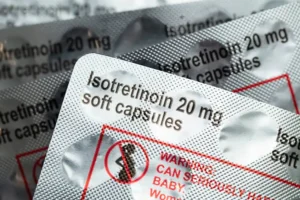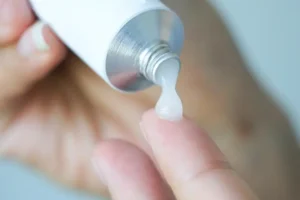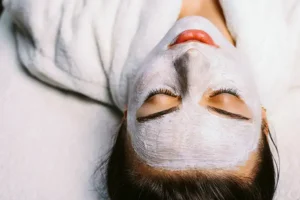Glycolic acid has gained popularity as a go-to solution for a variety of skin concerns, especially acne. If you’re struggling with breakouts, understanding how glycolic acid works can help you decide if it’s the right treatment for you. Let’s break down how this powerful alpha-hydroxy acid (AHA) tackles acne and improves skin texture.
What Is Glycolic Acid?
Extracted from sugarcane, glycolic acid is a type of alpha-hydroxy acid (AHA) with small molecules that allow it to penetrate the skin more effectively than other AHAs. By exfoliating the outer layer of dead skin cells, glycolic acid helps unclog pores and prevent acne from forming. This makes it a popular choice for people dealing with various forms of acne and related skin issues.
How Does Glycolic Acid Work for Acne?
Glycolic acid works by breaking down the bonds between dead skin cells on the surface of your skin. This helps prevent clogged pores, which are a major cause of acne. By reducing the buildup of oil, dead skin, and debris, glycolic acid allows your skin to breathe and heal more effectively.
Not only does glycolic acid exfoliate, but it also encourages cell turnover, which means your skin regenerates more quickly. This process helps keep pores clear, reducing the chance of future breakouts.
Glycolic Acid for Different Types of Acne
Glycolic acid can help with a variety of acne types. If you have blackheads or whiteheads (also known as comedones), glycolic acid helps by exfoliating the surface of the skin and clearing out trapped oil and dead skin cells.
For those dealing with inflamed pimples, such as papules or pustules, glycolic acid works by reducing the buildup that leads to clogged pores, which often turn into inflamed blemishes. It’s less effective for severe cystic acne, but consistent use can still improve overall skin texture and reduce minor breakouts.
Glycolic Acid Peels: Professional vs. At-Home Treatments
Glycolic acid comes in different concentrations, and the strength of the treatment will depend on whether you’re using a professional peel or an at-home product.
-
Professional Peels: Dermatologists or licensed aestheticians can perform GA peels using concentrations ranging from 20% to 70%. These peels deeply exfoliate the skin, offering more dramatic results for moderate to severe acne.
-
At-Home Products: At-home glycolic acid treatments usually contain 5% to 10% glycolic acid, making them gentler and safer for regular use. While they may not provide instant results like professional peels, consistent use of at-home products can help with mild to moderate acne and improve skin texture over time.
Clinical Studies: How Effective Is Glycolic Acid for Acne?
Research supports the use of glycolic acid for acne. In a study with 40 participants with moderate to severe acne, significant improvements were observed after a series of 35% to 50% glycolic acid peels. These treatments not only reduced comedones, papules, and pustules but also improved the overall texture of the skin.
Patients also reported brighter, more rejuvenated skin after consistent treatment with glycolic acid. For acne scars, repetitive treatments were necessary to see noticeable improvements in deeper cystic lesions and overall skin appearance.
Does Glycolic Acid Help with Acne Scars?
Glycolic acid can also be effective for treating acne scars, particularly mild to moderate ones. By stimulating collagen production, it helps repair skin tissue and smooth out the texture of the skin. Over time, this leads to a reduction in the appearance of atrophic (indented) scars.
For deeper acne scars, multiple sessions of higher-concentration GA peels, combined with other treatments like microneedling or laser therapy, may be necessary to achieve significant results.
Potential Side Effects of Glycolic Acid
Like any active ingredient, glycolic acid can have side effects, especially if used improperly or in high concentrations. The most common side effects include mild redness, peeling, and irritation. For individuals with sensitive skin, starting with a lower concentration and gradually building up usage is important to avoid irritation.
In a clinical study, only a small percentage of patients (5.6%) experienced side effects, proving that glycolic acid is generally safe, even for those with darker or more sensitive skin tones. As always, using sunscreen is essential when using glycolic acid, as it can increase sun sensitivity.
Integrating Glycolic Acid Into Your Skincare Routine
If you’re looking to add glycolic acid to your routine, start slow:
- Begin With a Low Concentration: If you’re new to glycolic acid, start with a product that contains 5% to 10%.
- Use It at Night: Apply glycolic acid after cleansing to support your skin’s natural overnight repair process.
- Always Use Moisturizer: Glycolic acid can be drying, so follow up with a hydrating moisturizer.
- Protect Your Skin: Glycolic acid increases sun sensitivity, so always apply sunscreen daily to protect your skin.
References:
https://www.ncbi.nlm.nih.gov/pmc/articles/PMC9943832/
https://pubmed.ncbi.nlm.nih.gov/9107290/
AcneAdvocate is a participant in the Amazon affiliate advertising program and this post may contain affiliate links, which means we may earn a commission or fees if you make a purchase via those links.





